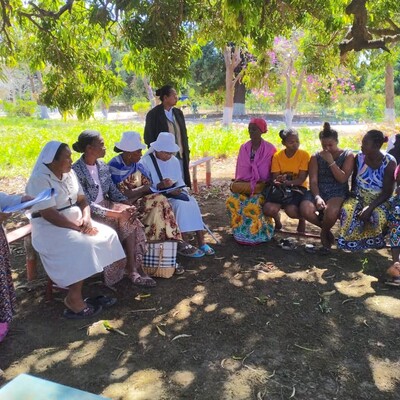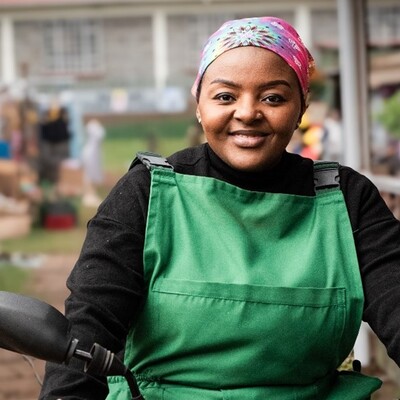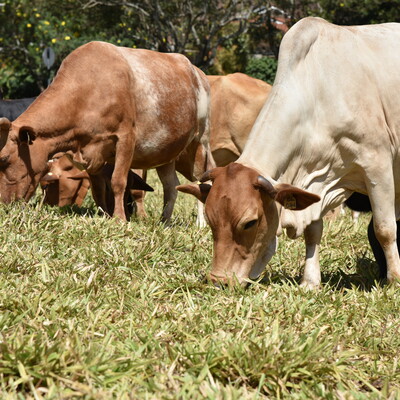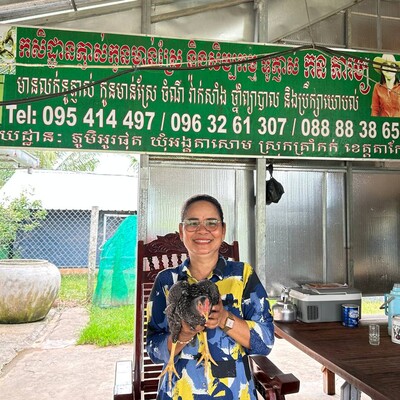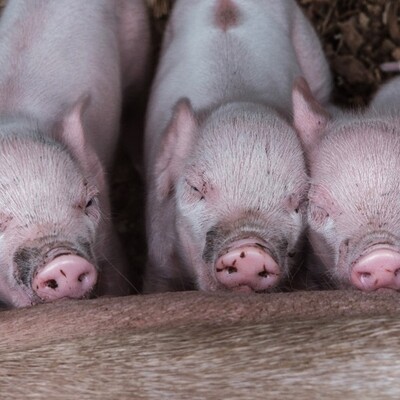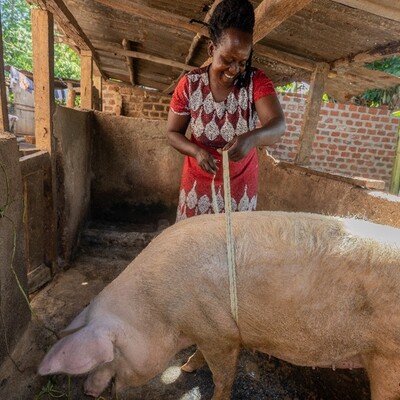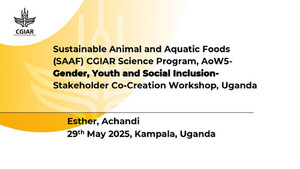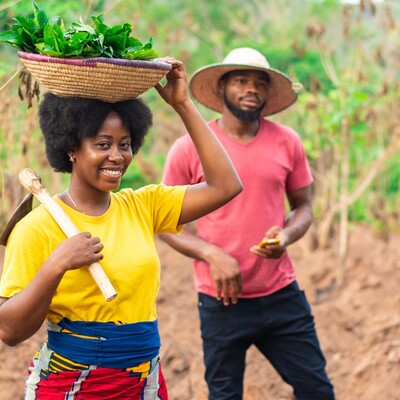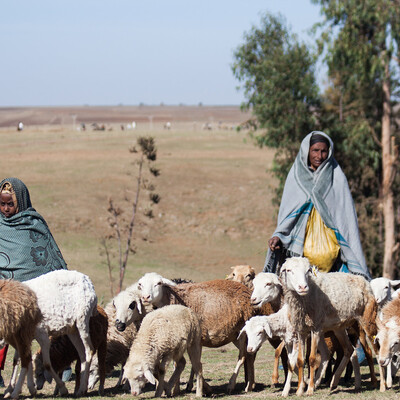
Unravelling value chains through participatory modelling: part 2
This is the second in a series of three blog articles focusing on the system dynamics modelling technique and its use at the International Livestock Research Institute (ILRI). Today, we get insights and challenges of applying group model building in Bihar, India, from one of our partners, Gregory Cooper.
Brief bio
Gregory Cooper is a postdoctoral researcher on the Market Interventions for Nutritional Improvement (MINI) project. He completed his PhD in Geography at the University of Southampton and is based at the School of Oriental and African Studies (SOAS) London. Cooper and Karl Rich, a principal scientist in foresight modeling and policy at ILRI and professor Bhavani Shankarfrom the Centre for Development, Environment and Policy, also at SOAS, are the co-principal investigators on the MINI project. They are applying the group model building technique to explore how a fruit and vegetable aggregation system in Bihar, India and Jessore, Bangladesh, may be made more nutritionally sensitive, with future applications to other value chains including poultry. The aggregation system, dubbed ‘LOOP’, is the invention of the non-governmental organization Digital Green. The MINI project also involves researchers from the London School of Hygiene and Tropical Medicine, Bangladesh Agricultural University and Lincoln University, New Zealand. This work is funded by and is being conducted under the CGIAR Research Program on Livestock at ILRI.
1. How are you using the systems dynamics modelling technique and what are some of the striking findings from the current survey?
The Market Interventions for Nutritional Improvement (MINI) project is investigating how to increase the availability of fruits and vegetables in nutritionally vulnerable markets in Bihar, India. The barriers to this goal are numerous, ranging from the inferior prices offered to farmers in smaller markets, to the typically weaker purchasing power of rural consumers.
Digital Green’s LOOP aggregation system represents a key system leverage point. Essentially, LOOP aggregators collect and market the fruit and vegetable production of different farms within individual village clusters. LOOP aims to save market transport costs and allows farmers to reinvest the time and money into on-farm and recreational activities. Questions remain as to the potential benefits and costs of scaling up such interventions, including the nutritional impacts and financial trade-offs along the chain. We use system dynamics (SD) modelling to simulate the LOOP aggregation system and evaluate various potential scenarios, ranging from the expansion of cold storage to subsidizing transport for farmers that supply LOOP.
We are designing and parameterizing the SD models (i.e. populating the model’s structure with numbers and equations) after the first year of MINI. Various other survey techniques, including a rapid value chain assessment and a 360 farmer-household survey, have informed the model’s design. We also administered a further 30 surveys along the value chain (e.g. commission agents, wholesalers and retailers). The surveys focused on capturing quantitative data to guide model parameterization, including the seasonal frequencies of vegetable harvesting, production and marketing costs and trader vehicle capacities.
In partnership with Digital Green, we have held five spatial group model building sessions in both Bhojpur and Muzaffarpur. The sessions involve 8-12 stakeholders from across the value chain: utilizing Karl Rich’s participatory GIS tool (called LayerStack) to map the system’s stocks, flows and historical reference modes (i.e. time-series data). Although the sessions were planned, with each activity given a specific time, certain sections ended up free-form when a particularly interesting component of the system was discussed. Fortunately, our colleagues from Digital Green (Vinay Rana, Sasmita Nayak and Amitesh Singh) helped facilitate the sessions, helping us to capture important nuggets of information without losing sight of the bigger picture.
 Sasmita Nayak (Digital Green) summarizing the day’s discussions at the end of the first group model building session in Muzaffarpur, Bihar (photo credit: SOAS/ Gregory Cooper).
Sasmita Nayak (Digital Green) summarizing the day’s discussions at the end of the first group model building session in Muzaffarpur, Bihar (photo credit: SOAS/ Gregory Cooper).
Between the sessions, we synthesized the information to inform our formal models in Stella, the computer program we use for developing SD models. This is a non-trivial task, requiring qualitative discussions to be translated into numerical model structures. We are fortunate to also have access to Digital Green’s LOOP data dashboard, which has recorded every LOOP market transaction since late-2015. The LOOP dashboard allows us to present quantitative data to the participants, as well as verify our group discussions during and after the sessions.
Although formal modelling results will not be available until around July 2019, the engagement with the LayerStack tool and the ease with which stakeholders picked up concepts were striking. The sessions also challenged our preconceptions of the system. For instance, we had assumed that the price of vegetables in the wholesale market of Ganj Bazar would be determined by local supply and demand. However, because distant traders purchase more than 60% of Ganj Bazar’s vegetable supply, the local prices are actually dependent on the prices in markets in neighbouring states such as Jharkhand and Uttar Pradesh. This finding alters how the local price in Ganj Bazar will be modelled – giving higher importance to external prices over local supply and demand.
2. Where and how is the SD model being applied? Please give examples of work undertaken by ILRI using this model and the results achieved.
The MINI project is applying SD model in Bihar (India) and Jessore (Bangladesh). The need for two modelling frameworks reflects the difference in aggregation systems and value chain contexts between India and Bangladesh – including different rates of LOOP transport subsidization and supply destinations. Moreover, trust-based relationships between local traders in Jessore and distant traders in urban areas like Dhaka and Khulna are important determinants of the flows of fruit and vegetables. Unlike in Bihar, where the traders prioritize potential profits above all else, the traders participating in our group model building (GMB) sessions in Jessore have said that they continue supplying their most established customers even when potential profits are higher elsewhere.
MINI’s work has been inspired by previous group SD applications in dairy value chains in Nicaragua and Tanzania, on the spread of East Coast fever among cattle in Zambia, and the planning of urban agriculture in New Zealand. These sessions have brought together producers, managers and policymakers of the respective systems – opening dialogue and scenarios to work towards common goals.
My interest in SD modelling stems from my PhD research, where I simulated the future sustainability of the Chilika lagoon fishery system in India. Building on the published output, dialogue is now ongoing with the Chilika Development Authority to understand the potential of converting the modelling results into policy interventions. So, watch this space!
3. What are the future plans? What can we expect out of the studies being conducted using this technique going forward?
Over the next months, we will be aiming to organize women-only modelling sessions in Bhojpur and Muzaffarpur districts. Female participation in the Bihar horticultural value chain is very low, for instance, with female-headed farms representing less than 5% of the approximately 35,000 farms that have supplied LOOP since 2015. Consequently, it has been difficult to organize mixed-gender meetings, meaning we hope the future meetings will increase our understanding of the barriers facing females in the LOOP system (e.g. time management, bargaining and intrahousehold decision-making dynamics). We aim to code these aspects into the SD model to understand how the benefits of evolving aggregation systems may differ between male and female participants.
 Vinay Rana (Digital Green) using the participatory-geographic information system (GIS) tool, LayerStack, to guide discussion on different transport costs to markets in Bhojpur district, Bihar (photo credit: SOAS/ Gregory Cooper).
Vinay Rana (Digital Green) using the participatory-geographic information system (GIS) tool, LayerStack, to guide discussion on different transport costs to markets in Bhojpur district, Bihar (photo credit: SOAS/ Gregory Cooper).
We hope to have a functioning first draft of the Bihar models by July 2019. The Bangladesh model will be ready by the end of 2019, with the household survey campaign in Jessore kicking off in late June. Future scenarios within the models will change the aggregation system to understand how leverage points like transport subsidy and cold storage may influence the financial and nutritional benefits along the value chain. These results will help Digital Green plan the next stages of LOOP, but also provide new insights into the sustainability and equity of aggregation systems and cooperatives. Towards the end of 2019, we hope to apply more conceptual SD techniques to the poultry value chains in north and/or west Africa. Discussions are currently ongoing as to where would be best to model and make use of the connections we are lucky to have through ILRI and Digital Green. So again, please watch this space!
In the next blog series, we speak with Jared Berends, a PhD student from Lincoln University who is researching pro-poor value chain upgrading strategies within one of the projects, ‘The Tanintharyi Regional Rural Income Livelihoods and Diversification (TRRILD) project’ that aims to identify and implement pro-poor interventions in targeted value chains (pigs and paddy) in the townships of Myeik and Palaw in southern Myanmar with a view to increase the incomes and diversify the livelihoods of over 6,000 households.
Read the first blog in the series here.
See more information here.






